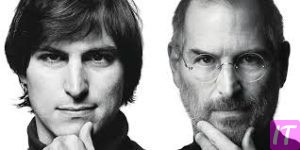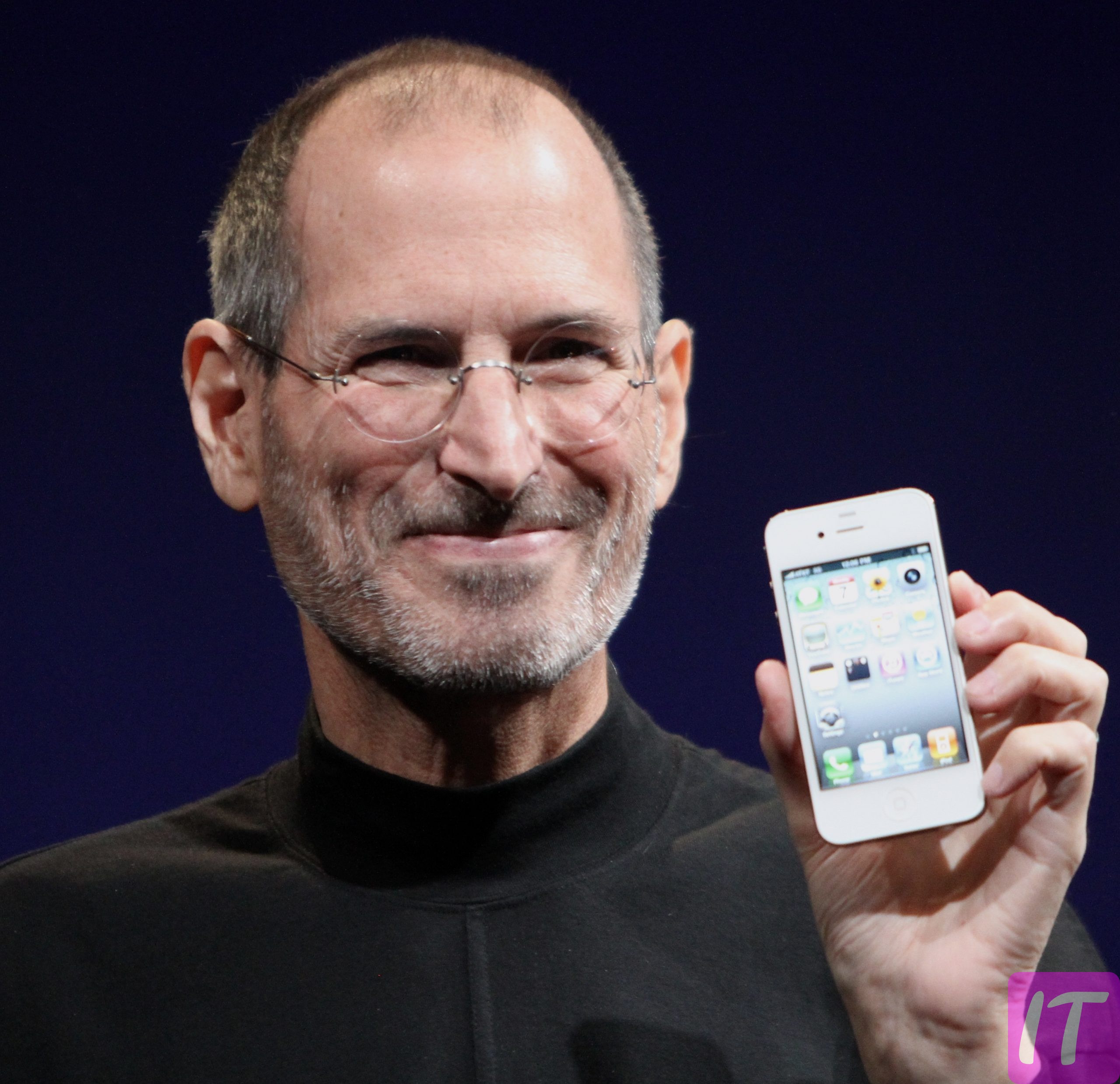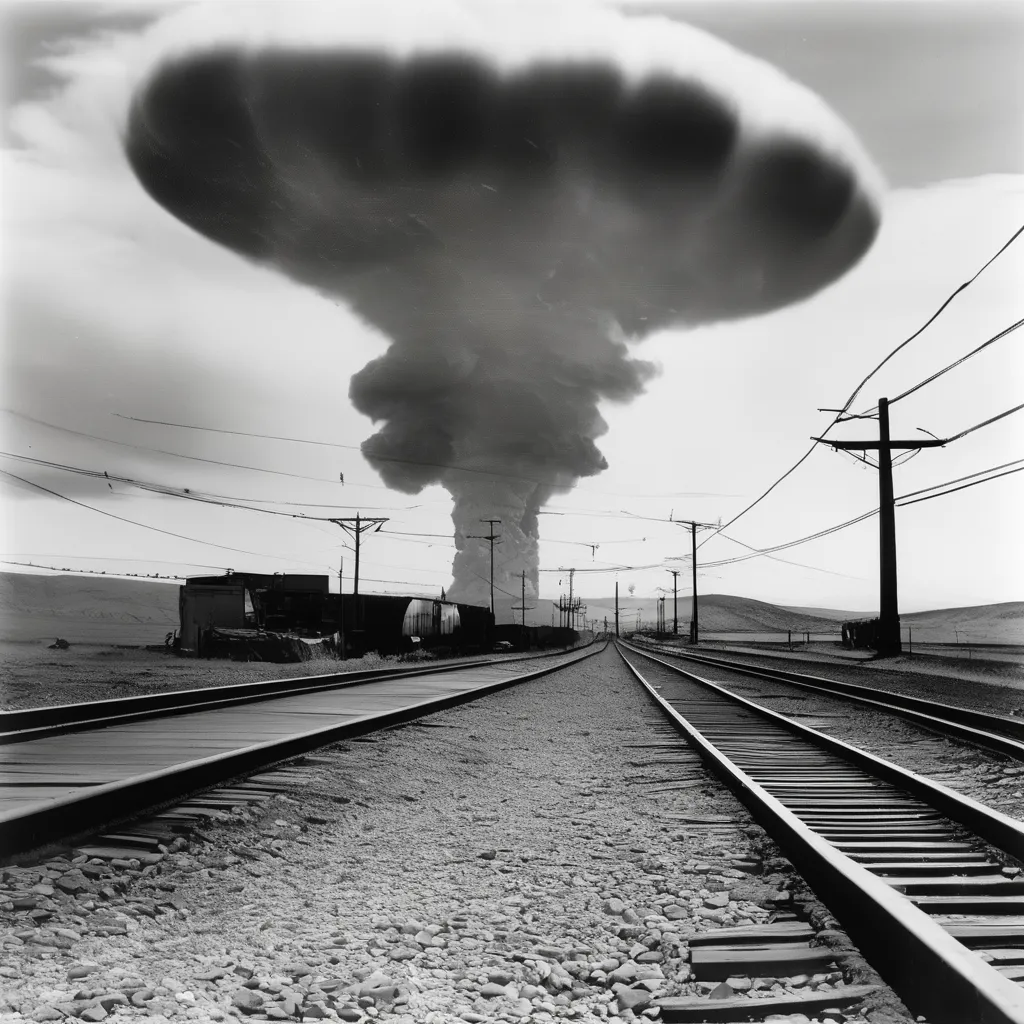Steve Jobs: The Visionary Innovator Who Transformed Technology and Business
Steve Jobs stands as a towering figure in the realms of technology and business, celebrated globally for his revolutionary contributions and visionary leadership. Known as the co-founder of Apple Inc., Jobs’ innovations have left an indelible mark on modern society, influencing countless aspects of contemporary life. This biographical account delves into the various phases of his life, exploring his achievements, challenges, and enduring legacy.
Introduction to the Life and Achievements of Steve Jobs
Steve Jobs, a name synonymous with innovation, has reshaped the world’s technological landscape. Born on February 24, 1955, in San Francisco, California, Jobs’ journey from a curious youth to a global icon is nothing short of inspiring. His visionary approach not only led to the development of groundbreaking devices but also transformed entire industries, setting new standards for user experience and design.
Throughout his career, Jobs was instrumental in creating products that were not just functional but also aesthetically pleasing. His relentless pursuit of perfection and his unique ability to anticipate consumer needs positioned Apple as a leader in technology. Under his leadership, Apple introduced iconic products like the Macintosh, iPod, iPhone, and iPad, which revolutionized computing, music, and communication.
Jobs’ entrepreneurial spirit extended beyond Apple. He founded NeXT, a company that developed advanced computer workstations for the higher education and business markets, and played a pivotal role in Pixar Animation Studios’ success, which forever changed the animation industry. His vision influenced various spheres, from personal computing to entertainment, shaping the modern digital age.
Early Life and Education of Steve Jobs
Steve Jobs was adopted at birth by Paul and Clara Jobs. The couple provided a nurturing environment that cultivated his early interest in electronics. Jobs’ adoptive father, Paul, was a machinist and introduced him to the world of mechanics and electronics. This early exposure played a significant role in shaping Jobs’ technical acumen and innovative mindset.
Jobs’ formal education began in California, where he attended Monta Loma Elementary School. He later enrolled at Homestead High School, where he met Steve Wozniak, a fellow electronics enthusiast who would become his future business partner. Jobs’ educational journey was marked by a sense of restlessness and a desire to explore unconventional paths.
After graduating from high school, Jobs briefly attended Reed College in Portland, Oregon. Although he dropped out after just one semester, he continued to attend classes informally. During this period, Jobs developed an interest in calligraphy, which later influenced the typography choices in Apple’s first computers. This exposure to different disciplines helped shape his holistic approach to technology and design.
The Formative Years: Steve Jobs’ Childhood
Steve Jobs’ childhood was characterized by an innate curiosity and a passion for innovation. Growing up in Silicon Valley, he was surrounded by the burgeoning tech industry, which profoundly influenced his interests. His adoptive parents encouraged his inquisitive nature, providing him with tools and resources to explore his interests.
Despite his non-traditional educational path, Jobs excelled in areas that piqued his interest. He spent much of his free time tinkering with electronics in the garage, a place that served as the incubation ground for his early inventions. His friendship with Steve Wozniak, who shared similar passions, further fueled his desire to create and innovate.
Jobs’ rebellious nature often put him at odds with conventional schooling. He was a deep thinker and a voracious learner, often questioning established norms and seeking alternative solutions. This period of self-discovery laid the foundation for his later achievements, as he began to understand the importance of combining technological innovation with creative design.
Steve Jobs’ Journey Through Higher Education
Steve Jobs’ brief stint at Reed College was pivotal in shaping his approach to life and work. Although he formally attended Reed for only one semester, his time there was marked by an exploration of diverse subjects, ranging from literature to calligraphy. This eclectic mix of interests played a crucial role in influencing his design philosophy at Apple.
During his time at Reed, Jobs was exposed to liberal arts education, which emphasized critical thinking and creativity. He immersed himself in various courses, particularly those that allowed him to express his creative side. His fascination with typography, for example, emerged from a calligraphy class that he found particularly engaging.
Jobs’ decision to drop out of Reed College stemmed from his belief that he could learn more from real-world experiences than from a traditional academic setting. This unconventional path allowed him to follow his passions without the constraints of a structured curriculum. His time as a drop-in student at Reed also enabled him to forge meaningful connections and gain new perspectives, which would later influence his approach to product design and innovation.
Career Beginnings: How Steve Jobs Entered the Workforce
After leaving Reed College, Jobs returned to California and began exploring opportunities in the nascent tech industry. One of his first significant experiences was a summer job at Hewlett-Packard, where he worked alongside engineers and gained hands-on experience with advanced technology. This exposure to a professional environment further fueled his passion for electronics and innovation.
In 1974, Jobs joined Atari, a pioneer in arcade gaming, where he worked as a technician. During his time at Atari, he demonstrated exceptional problem-solving skills and a knack for unconventional thinking. These qualities caught the attention of his supervisors and colleagues, solidifying his reputation as a young innovator with immense potential.
Jobs’ tenure at Atari also provided him with valuable lessons in business and management. He learned about the importance of user experience and the need to create products that resonated with consumers. This period was crucial in shaping his customer-centric approach, which would later become a hallmark of Apple’s product philosophy.
Steve Jobs’ Rise in the Industry
Steve Jobs’ rise in the industry began in earnest in 1976 when he co-founded Apple Computer Inc. alongside Steve Wozniak and Ronald Wayne. Their first product, the Apple I, was a single-board computer kit designed for hobbyists. Despite its rudimentary design, the Apple I laid the groundwork for more advanced innovations.
The introduction of the Apple II in 1977 marked a significant milestone in Jobs’ career. The Apple II was one of the first highly successful mass-produced microcomputers, featuring an integrated keyboard and color graphics. Jobs’ emphasis on user-friendly design and functionality helped the Apple II gain widespread popularity, establishing Apple as a major player in the tech industry.
Jobs’ relentless pursuit of innovation continued with the development of the Macintosh in 1984. The Macintosh was a revolutionary product, featuring a graphical user interface and a mouse, which set new standards for personal computing. Although initial sales were modest, the Macintosh eventually became a cornerstone of Apple’s product lineup, showcasing Jobs’ ability to envision the future of technology.
Key Milestones in Steve Jobs’ Professional Career
One of the most defining moments in Steve Jobs’ career was his ouster from Apple in 1985. This seemingly devastating setback, however, turned into a catalyst for his next wave of innovation. Jobs founded NeXT Inc., a company that aimed to develop high-end computers for the business and education sectors. Although NeXT’s hardware was not commercially successful, its software laid the foundation for future Apple products, including macOS.
Jobs’ involvement with Pixar Animation Studios marked another key milestone. Acquiring the company in 1986, he transformed it into a powerhouse of animation, producing groundbreaking films like “Toy Story,” “Finding Nemo,” and “The Incredibles.” Pixar’s success solidified Jobs’ reputation as a visionary leader beyond the tech industry.
In 1996, Apple acquired NeXT, paving the way for Jobs’ return to the company he co-founded. His return marked the beginning of a new era for Apple, culminating in the release of the iMac in 1998. The iMac’s innovative design and user-friendly interface revitalized Apple’s fortunes. Subsequent products, including the iPod (2001), iPhone (2007), and iPad (2010), redefined entire industries and showcased Jobs’ unparalleled ability to anticipate market trends and consumer desires.
Notable Projects and Contributions by Steve Jobs
Steve Jobs’ contributions to the technology world are vast and varied. One of his most notable projects is the Apple II, which brought computing into homes and schools, making technology accessible to a broader audience. The Apple II’s success demonstrated Jobs’ ability to create products that combined functionality with ease of use.
The launch of the Macintosh in 1984 represented a paradigm shift in personal computing. Its graphical user interface and intuitive design set new standards, influencing future generations of computers. The Macintosh introduced concepts like the desktop metaphor and drag-and-drop functionality, which have become ubiquitous in modern computing.
Jobs’ introduction of the iPod in 2001 revolutionized the music industry. The iPod’s sleek design, combined with the iTunes software ecosystem, changed the way people discovered, purchased, and listened to music. This innovation was followed by the iPhone in 2007, which not only redefined mobile communication but also laid the groundwork for the modern smartphone industry.
Steve Jobs’ Leadership Style and Philosophy
Steve Jobs’ leadership style was marked by a unique blend of visionary thinking, relentless pursuit of perfection, and an intense focus on user experience. He was known for his ability to inspire and motivate his team to achieve extraordinary results, often pushing the boundaries of what was considered possible.
Jobs’ philosophy centered on the idea that technology should serve as an extension of human capabilities, enhancing the user’s experience rather than complicating it. This user-centric approach became a cornerstone of Apple’s design ethos, influencing every product the company developed under his leadership.
One of Jobs’ key leadership traits was his attention to detail. He was deeply involved in every aspect of product development, from design to functionality. This hands-on approach ensured that every product met his high standards of quality and innovation. Despite being demanding and often uncompromising, his leadership inspired loyalty and dedication among his team members, many of whom were driven by a shared vision of creating groundbreaking technology.
The Challenges Steve Jobs Faced and Overcame
Throughout his career, Steve Jobs faced numerous challenges that tested his resilience and determination. One of the most significant challenges was his departure from Apple in 1985. Forced out of the company he co-founded, Jobs experienced a personal and professional setback. However, this period of adversity ultimately fueled his drive to innovate and led to the creation of NeXT and the transformation of Pixar.
Jobs also faced significant health challenges, being diagnosed with a rare form of pancreatic cancer in 2004. Despite undergoing multiple surgeries and treatments, he continued to lead Apple with unwavering dedication. His illness brought about periods of absence from the company, during which he ensured that Apple’s core principles and vision remained intact.
Financial challenges and market competition also posed significant hurdles. During the early years of NeXT, the company struggled to achieve commercial success. Similarly, upon his return to Apple, Jobs had to navigate the company through financial difficulties and intense competition from rivals like Microsoft. His ability to steer Apple through these challenges and emerge stronger is a testament to his leadership and strategic acumen.
Steve Jobs’ Influence on Industry Practices
Steve Jobs’ influence on industry practices extends far beyond his products. His emphasis on design as a critical component of technology has reshaped how companies approach product development. Jobs believed that even the smallest details mattered and that great design could elevate a product from functional to iconic.
Jobs also revolutionized the retail experience with the introduction of Apple Stores. These stores were designed to create a seamless and immersive customer experience, allowing users to engage with products in a hands-on environment. This approach not only boosted sales but also strengthened the emotional connection between consumers and the brand.
His approach to marketing and branding has become a benchmark in the industry. Jobs’ product launches, characterized by dramatic reveals and meticulous attention to presentation, generated significant excitement and media coverage. Apple’s marketing campaigns, focusing on simplicity and elegance, have set new standards for how technology is communicated and perceived.
Mentorship and Guidance: Steve Jobs’ Role in Nurturing Talent
Steve Jobs was known for his ability to identify and nurture talent. He surrounded himself with individuals who shared his passion for innovation and excellence. Jobs’ mentorship extended beyond technical skills; he also instilled a sense of purpose and vision in his team members, encouraging them to think differently and push the boundaries of what was possible.
One of Jobs’ notable mentees was Jonathan Ive, Apple’s Chief Design Officer. Ive’s design sensibilities closely aligned with Jobs’ vision, resulting in a collaborative partnership that produced some of Apple’s most iconic products. Jobs’ mentorship helped Ive refine his design philosophy and execute ideas that resonated with users worldwide.
Jobs also played a significant role in fostering a culture of innovation at Apple. He encouraged open communication, idea sharing, and a willingness to take risks. This environment enabled talented individuals to thrive and contribute to groundbreaking projects. Jobs’ guidance and leadership have left a lasting impact on many of his colleagues, who continue to carry forward his legacy of innovation.

Public Speaking and Workshops Hosted by Steve Jobs
Steve Jobs was a masterful communicator, known for his captivating public speaking abilities. His keynote presentations, often referred to as “Stevenotes,” were highly anticipated events that drew global attention. Jobs had a unique ability to convey complex technological concepts in a simple and engaging manner, making his presentations memorable and impactful.
One of Jobs’ most famous speeches was his commencement address at Stanford University in 2005. In this speech, he shared personal stories and insights, encouraging graduates to follow their passions and trust their instincts. The themes of resilience, innovation, and staying true to one’s vision resonated deeply with audiences and are still widely referenced today.
In addition to public speeches, Jobs conducted internal workshops and brainstorming sessions at Apple. These workshops were designed to foster creativity and collaboration, allowing team members to explore new ideas and approaches. Jobs’ ability to facilitate productive discussions and inspire his team played a crucial role in driving innovation within the company.
Awards and Recognitions Garnered by Steve Jobs
Steve Jobs received numerous awards and recognitions throughout his career, acknowledging his contributions to technology, design, and business. In 1985, he was awarded the National Medal of Technology and Innovation, the highest honor for technological achievement in the United States, alongside Steve Wozniak for their work at Apple.
Jobs was also inducted into the California Hall of Fame in 2007, recognizing his impact on the state’s technology industry. His influence extended to popular culture and design, earning him a posthumous Grammy Trustees Award in 2012 for revolutionizing the music industry with the iPod and iTunes.
In 2013, just two years after his passing, Jobs was posthumously inducted into the Bay Area Business Hall of Fame. This recognition highlighted his significant influence on industry practices and business leadership. Despite his passing, Jobs’ legacy continues to be celebrated through various honors and accolades, underscoring his lasting impact on the world.
Personal Life: Steve Jobs’ Interests and Hobbies
Steve Jobs’ personal life was as multifaceted as his professional career. He had a keen interest in spirituality and Eastern philosophy, influenced by a trip to India in 1974. This journey led him to explore Zen Buddhism, and its principles of mindfulness and simplicity greatly influenced his approach to life and work.
Jobs was also an avid reader, with a particular interest in literature and calligraphy. His appreciation for typography and design stems from his early exposure to calligraphy classes at Reed College. This interest in aesthetics and beauty was evident in the meticulous design of Apple products.
In his personal life, Jobs enjoyed spending time with his family. He was married to Laurene Powell Jobs, with whom he had three children. Jobs also had a daughter, Lisa Brennan-Jobs, from a previous relationship. Despite his often demanding work schedule, he valued quality time with his family and sought to find a balance between his professional and personal life.
The Legacy of Steve Jobs: Impact and Inspiration
Steve Jobs’ legacy is characterized by his unparalleled contributions to technology and design. He transformed Apple into one of the most valuable and influential companies in the world, leaving an indelible mark on several industries. His vision for integrating technology seamlessly into everyday life has reshaped how people interact with their devices and the digital world.
Jobs’ emphasis on design and user experience has become a guiding principle for countless companies. His belief in creating products that are not only functional but also aesthetically pleasing has set new standards for innovation. The impact of his work can be seen in the ubiquity of touchscreens, intuitive interfaces, and sleek designs across the technology landscape.
Beyond his products, Jobs’ story of resilience, creativity, and visionary leadership continues to inspire entrepreneurs and innovators worldwide. His ability to turn setbacks into opportunities, his relentless pursuit of excellence, and his willingness to take bold risks serve as powerful lessons for future generations. Jobs’ legacy is a testament to the transformative power of vision and determination.
Steve Jobs’ Views on Industry Trends and Future Directions
Steve Jobs had a keen ability to anticipate and shape industry trends. He believed that technology should enhance human experiences and simplify everyday tasks. Jobs foresaw the convergence of computing, communication, and entertainment, leading to the development of multifunctional devices like the iPhone and iPad.
Jobs was a strong advocate for renewable energy and environmental sustainability. Under his leadership, Apple took significant steps towards reducing its carbon footprint and incorporating eco-friendly practices in its operations. He believed that technological advancements and environmental responsibility could coexist, setting a precedent for corporate sustainability.
In his later years, Jobs expressed interest in the potential of biotechnology and alternative energy. His investment in companies like Tesla and his involvement in the development of the Apple Campus 2, a model of sustainable architecture, reflected his commitment to future-forward thinking. Jobs’ visionary outlook on industry trends continues to influence how companies approach innovation and sustainability.
In-Depth Look at Steve Jobs’ Published Works
Steve Jobs was not an author in the traditional sense, but his life and work have been extensively documented through various published works. The most notable among these is Walter Isaacson’s biography “Steve Jobs,” which provides an in-depth look at his life, career, and philosophy. Published in 2011, the book is based on numerous interviews with Jobs, his family, and colleagues, offering a comprehensive portrayal of his journey.
Jobs’ thoughts and ideas were also captured in various interviews, speeches, and internal Apple communications. His 2005 Stanford commencement speech, often referred to as “Stay Hungry, Stay Foolish,” remains one of the most cited and influential pieces of his oratory work. The speech encapsulates his life philosophy and continues to inspire readers and listeners.
Additionally, Jobs’ influence on design and technology is explored in various academic and industry publications. These works analyze his contributions to specific products, his approach to innovation, and his impact on industry practices. Jobs’ legacy continues to be a subject of study and admiration, providing valuable insights into the mind of one of the most influential figures in modern history.
Philanthropic Efforts and Charitable Contributions by Steve Jobs
Steve Jobs’ approach to philanthropy was relatively private compared to his peers. However, he made significant contributions that reflected his values and interests. Together with his wife, Laurene Powell Jobs, he supported various educational initiatives, focusing on innovation and reform within the education system.
Jobs’ contributions to medical research were also notable. He funded research at the Stanford University School of Medicine, specifically targeting advancements in cancer treatment. His personal battle with pancreatic cancer underscored his commitment to supporting medical research and improving healthcare.
In the realm of environmental sustainability, Jobs played a crucial role in advancing green initiatives at Apple. Under his leadership, Apple invested in renewable energy sources and implemented eco-friendly manufacturing practices. These efforts have had a lasting impact, positioning Apple as a leader in corporate sustainability and environmental responsibility.
Steve Jobs was also known to support various artistic and cultural institutions. His involvement with







